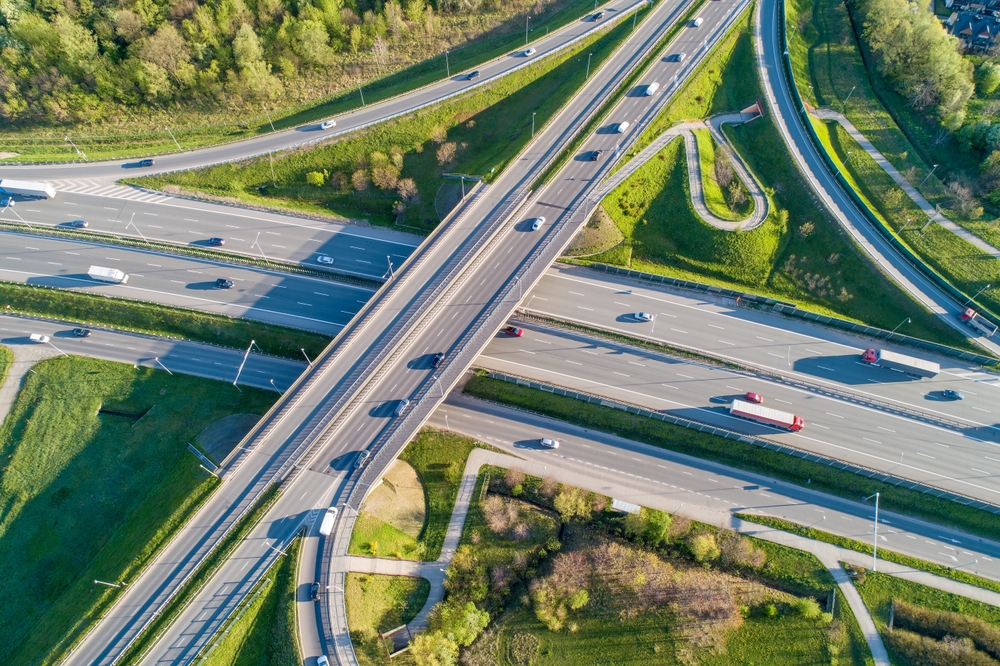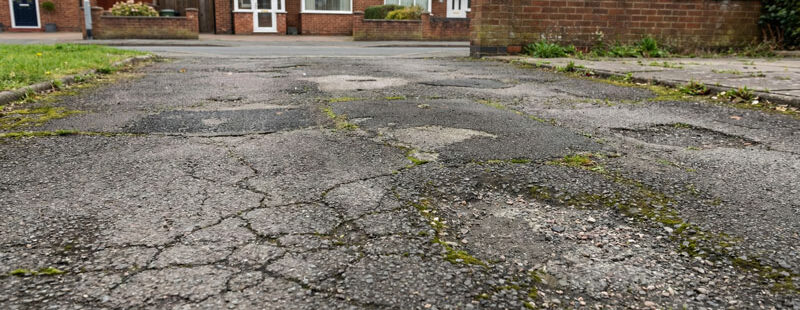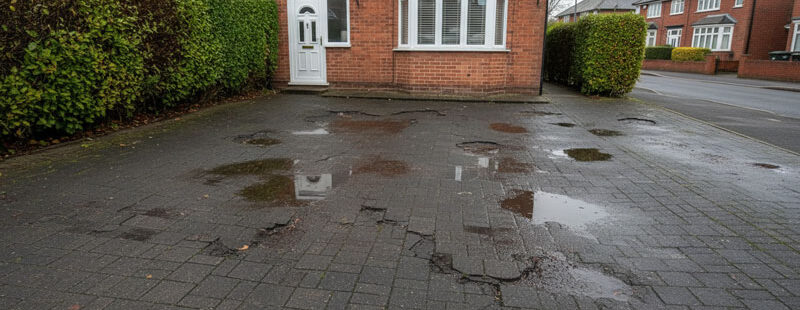
- min min
- No Comments
- September 18, 2025
From Motorways to Footpaths: How Surfacing Standards Differ
Road surfacing isn’t one-size-fits-all. Depending on the road’s purpose, traffic volume, climate, footfall, and safety requirements, surfacing standards vary hugely — from the heavy duty demands of motorways to the fine detail and user comfort required on footpaths. In this post, we break down the design and material choices for different road types, how standards differ, and how to choose the right specification.
Why Different Roads Require Different Surfacing Standards
The demands placed on motorways versus residential footpaths are fundamentally different. Key factors that influence surfacing standards include:
Traffic load & vehicle type: Heavy goods vehicles on motorways versus mostly pedestrian or light vehicular load on footpaths.
Speed of vehicles: High speeds lead to greater wear, skid risk, noise, splash etc., more relevant on motorways.
Safety & skid resistance: Essential on roads with high speed or frequent braking; less critical in footpath areas but still important, especially where wet surfaces are involved.
User comfort & accessibility: On footpaths, the surface must be even, slip-resistant, smooth, and accessible for all users (including those with mobility issues).
Environmental exposure and drainage: Water, frost, UV, freeze-thaw cycles impact different surfaces differently, depending on exposure and traffic.
Key Standards & Guidance in the UK
To ensure quality, safety, and longevity, the UK has several standards and manuals:
Design Manual for Roads and Bridges (DMRB) — provides specifications for motorway and trunk road surfacing. Wikipedia+2standardsforhighways.co.uk+2
Manual of Contract Documents for Highway Works (MCHW) — contract and specification standard for highways construction and maintenance. standardsforhighways.co.uk
Standards for Highways site — repository of specifications (e.g. surface materials, mixes) for different types of carriageways. standardsforhighways.co.uk+1
For footpath / footway / cycle route surfaces: guidance from Sustrans, Active Travel England, and local highway design guides address surfacing, foundations (sub-base), edging, drainage etc. Sustrans+2activetravelengland.gov.uk+2
Typical Surfacing & Structural Spec Differences
Here’s a comparison of how surfacing design tends to differ between motorways, urban roads, residential roads, and footpaths/footways.
| Feature | Motorways / Trunk Roads | Urban / Residential Streets | Footpaths / Footways |
|---|---|---|---|
| Surface Course | Thick asphalt or bituminous concrete mixes; high performance aggregates; high texture & skid resistance; designed for heavy & fast traffic. | Moderate thickness; strong binders; balance between durability, noise, and maintenance. | Thinner surfacing layers; smoother texture; may use asphalt, concrete, block paving, or other bound materials. Surface evenness & comfort more emphasised. |
| Base / Sub-base / Structural Layers | Robust base and sub-base layers to withstand heavy loads; designed for millions of load cycles. | Moderate structural layers; may allow lighter base in lower-traffic segments. | Flexible, but usually lighter base; good subgrade preparation; often granular or recycled material sub-base if traffic minimal. |
| Skid Resistance, Surface Texture | Very high standards; high PSV (Polished Stone Value) aggregates; macrotexture to help water drainage & reduce aquaplaning risk. standardsforhighways.co.uk | Good skid resistance needed especially on bends, junctions, pedestrian crossings. | Smooth but slip-resistant; safety around kerbs, drainage; edges must be safe. Less need for heavy macrotexture unless heavy footfall or exposed to weather. |
| Drainage & Water Management | Critical: road camber, frequent drainage points, permeable surfaces or overlays to prevent pooling, reduce spray. | Essential but simpler systems; gutters, crossfall, sometimes permeable paving in urban design. | Even surface, slight camber; good joints and edge detailing; minimal ponding; materials chosen to avoid slipperiness when wet. |
| Durability & Maintenance | Expect long life under harsh conditions; periodic overlays, resurfacing; materials must resist rutting, fatigue. | Frequent maintenance in high-use areas; resurfacing, patch repairs. | Simpler maintenance; focus on keeping surface smooth and safe; repairs to joints, edges, resurface if uneven or unsafe. |
| Accessibility & Comfort | Less emphasis on walkability etc., except at crossings. | More consideration of pedestrian safety, noise, vibration. | High priority: accessible surfaces for wheelchairs, pushchairs; minimal trip hazards; tactile paving as required; smooth transitions; materials comfortable underfoot. |
Example of Technical / Material Requirements
To give specific examples:
Motorways: Use of surface course materials per CD 236 Surface Course Materials for Construction in DMRB. This specifies the range of PSV, aggregate types, and wearing course mix depending on traffic levels. standardsforhighways.co.uk
Footways: Local design guides often require bituminous surfacing of ~20-25 mm thickness over suitable binder & sub-base (see Leicestershire Highway Design Guide for residential footways). leicestershirehighwaydesignguide.uk
Challenges in Meeting Standards Across Types
While standards exist, there are hurdles in practice:
Budget constraints can lead to compromises (e.g. thinner surfaces, lower grade materials) especially for footpaths or quiet roads.
Varying climate or soil/subgrade conditions may force deviation from default standards.
Coordination between different authorities (motorway/trunk road authorities vs local councils) may lead to inconsistency in transitions between road types.
Balancing competing priorities: cost, noise, durability, environmental concerns, aesthetics.
How to Choose the Right Specification for Your Project
If you are planning a surfacing project (motorway, local road, or footpath), here is a checklist to help choose the right standard:
Assess traffic type and expected load — how many heavy vehicles, expected lifespan, speed.
Define use case and users — pedestrians, cyclists, children, mobility needs.
Determine environmental factors — rainfall, temperature extremes, freeze-thaw, soils.
Set safety criteria — skid resistance, visibility, drainage etc.
Design for maintenance — easier repair, expected life, future overlays.
Review local standards & regulations — check DMRB / MCHW for major roads; local council or active travel guidance for footways.
Budget & cost-benefit — higher standards cost more, but may reduce maintenance and safety risks over time.
How East Herts Surfacing Can Help
At East Herts Surfacing, we work with the full spectrum of surfacing standards — from motorway and trunk road specifications to footpaths and cycleways. Our team understands the right materials, layer structure, drainage, and finishes for each project type. If you’re considering a surfacing project and want advice, specification, or a detailed cost estimate, please reach out via our contact page at East Herts Surfacing Contact — we’d be glad to help.
Conclusion
Road surfacing standards vary for good reason: the demands on a motorway are very different to those on a footpath. Knowing those differences — in traffic load, safety, durability, accessibility — helps you choose the right materials, designs, and maintenance practices. Proper specification not only ensures safety and compliance, but also comfort, cost-effectiveness, and longevity.





